BLOG - Page 33
Recently created mixtures:

Sea-Buckthorn Macerated oil
February 7, 2019

Home made air freshener
June 29, 2016

Homemade Dog-rose distillate
June 28, 2016

Homemade jasmine distillate
June 22, 2016

Moxibustion treatment with Moxa stick
May 30, 2016

Face and body gentle oil cleanser
May 26, 2016
BLOG / LATEST ADDITIONS!
Mango Seed Butter (Mangifera Indica) ☸ Base oils ☸ Base / General
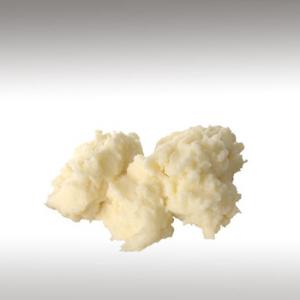

Mangifera Indica seed oil and Mangifera Indica (Mango) Seed Butter are the fats expressed from the seeds (also called kernels) of Mangifera Indica.
Mango butter is obtained from the fruit seed of Mango Tree, which is native to the sub-tropics of India and other similar climates throughout the world. Its chemical structure is similar to both Cocoa Butter and Shea Butter and is used in similar applications.
Mango is a large, evergreen tree, thought to have originated in the Indo-Burma region and is now grown throughout the world. It has been cultivated for over 6,000 years.
Mango Butter is naturally white or yellow in color with a slight odor. Mango Kernels have an oil contens of 8% to 10%.
Mangoes are an excellent nutritional source, containing an abundance of vitamins, minerals and antioxidants - calcium, potassium, Vitamin A, E and C and several B Vitamins. Many studies have shown the health-promoting benefits of Mango.
Mango butter is obtained from the fruit seed of Mango Tree, which is native to the sub-tropics of India and other similar climates throughout the world. Its chemical structure is similar to both Cocoa Butter and Shea Butter and is used in similar applications.
Mango is a large, evergreen tree, thought to have originated in the Indo-Burma region and is now grown throughout the world. It has been cultivated for over 6,000 years.
Mango Butter is naturally white or yellow in color with a slight odor. Mango Kernels have an oil contens of 8% to 10%.
Mangoes are an excellent nutritional source, containing an abundance of vitamins, minerals and antioxidants - calcium, potassium, Vitamin A, E and C and several B Vitamins. Many studies have shown the health-promoting benefits of Mango.
Submitted by OperaDreamhouse (September 16, 2014)
Kpangnan Butter (Vitellaria Paradoxa Nilotica) ☸ Base oils ☸ Base / General
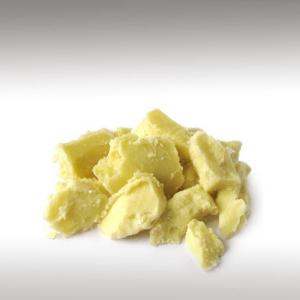

Vitellaria Paradoxa Nilotica (Shea Butter tree) is an indigenous African tree species that is widely distributed in the dry areas of northern and eastern Uganda.
Vitellaria Nilotica Butter is produced only in Uganda and Sudan and is softer, melts at a lower temperature, has a higher absorbtion rate and smells less strongly than the western kind (Vitellaria Paradoxa), that is produced in Ghana among others.
Real Shea Butter is an off- white or ivory-colored fat extracted from the nut of the African Shea tree (Vitellaria Paradoxa). Kpangnan Butter is yellow in color and comes from the African Butter Tree.
Kpangnan butter is affectionately known as "Yellow Shea Butter" or "Golden Shea Butter".
This Shea Butter is very smooth, with a firm consistency that is to be expected from raw shea. It has a light nutty smell that is also typical of real Shea.
Most people gravitate towards Kpangnan because of the consistency, the tale of it being Golden Shea, and its a bit cheaper to supply. Eastern African (Kpangnan Butter) Shea Butter is softer than West African Shea Butter. It is creamier and silky, making it quick and easy to apply. Eastern Shea Butter has a sweeter scent than West African shea butter.
Chemical structure:
Shea Butter is a triglyceride composed primarily of a monounsaturated fatty acid - oleic acid(omega-9) (40-60%), and a saturated fatty acid - stearic acid (20 - 50%). These components make it melt around body temperature, and absorb well into skin.
Shea Paradoxa contains more Vitamin A and is better if you want to use it on scars. The Western Shea contains more Vitamin E than the nilotica.
Kpangnan unsaponifiable value is not as high as unrefined Shea Butter.
Vitellaria Nilotica Butter is produced only in Uganda and Sudan and is softer, melts at a lower temperature, has a higher absorbtion rate and smells less strongly than the western kind (Vitellaria Paradoxa), that is produced in Ghana among others.
Real Shea Butter is an off- white or ivory-colored fat extracted from the nut of the African Shea tree (Vitellaria Paradoxa). Kpangnan Butter is yellow in color and comes from the African Butter Tree.
Kpangnan butter is affectionately known as "Yellow Shea Butter" or "Golden Shea Butter".
This Shea Butter is very smooth, with a firm consistency that is to be expected from raw shea. It has a light nutty smell that is also typical of real Shea.
Most people gravitate towards Kpangnan because of the consistency, the tale of it being Golden Shea, and its a bit cheaper to supply. Eastern African (Kpangnan Butter) Shea Butter is softer than West African Shea Butter. It is creamier and silky, making it quick and easy to apply. Eastern Shea Butter has a sweeter scent than West African shea butter.
Chemical structure:
Shea Butter is a triglyceride composed primarily of a monounsaturated fatty acid - oleic acid(omega-9) (40-60%), and a saturated fatty acid - stearic acid (20 - 50%). These components make it melt around body temperature, and absorb well into skin.
Shea Paradoxa contains more Vitamin A and is better if you want to use it on scars. The Western Shea contains more Vitamin E than the nilotica.
Kpangnan unsaponifiable value is not as high as unrefined Shea Butter.
Submitted by OperaDreamhouse (September 16, 2014)
Cocoa Butter (Theobroma Cacao) ☸ Base oils ☸ Spiritual Practises
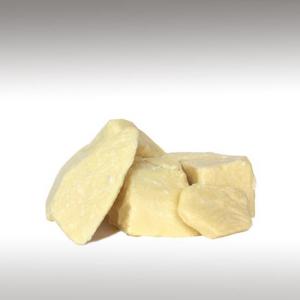

The Maya believed the Kakaw (Cacao) was discovered by the gods in a mountain that also contained other delectable foods to be used by them. According to Maya mythology, the Plumed Serpent gave Cacao to the Maya after humans were created from maize by divine grandmother goddess Xmucane.
Submitted by OperaDreamhouse (September 16, 2014)
Mango Seed Butter (Mangifera Indica) ☸ Base oils ☸ Medicine / Health


Mango Butter is known for its abundant emollient properties and is known for its ability to aid in healing wounds and regenerative cells. It has a long history of use in tropical regions as a skin softener and for its ability to moisturize, protect, restore and reduce the degeneration of skin cells. It is also known to protect against UV radiation.
Mango Butter has a protective effect against UV radiation. Dermatologists often recommend Mango Butter for the treatment of wrinkles
Mango Butter has a protective effect against UV radiation. Dermatologists often recommend Mango Butter for the treatment of wrinkles
Submitted by OperaDreamhouse (September 16, 2014)
Kpangnan Butter (Vitellaria Paradoxa Nilotica) ☸ Base oils ☸ Beauty / Cosmetics


Kpangnan Butter is softer - powdery like - leaving you with a drier yet, silky feeling. Shea Butter is a bit harder than Kpangnan Butter and upon application leaves a bit of shine while absorbing into the skin. If you want quality, go with 100% unrefined Shea Butter for the hair and skin.
Submitted by OperaDreamhouse (September 16, 2014)
Spirulina (Arthrospira Platensis and Arthrospira Maxima) ☸ Ingredients ☸ Base / General
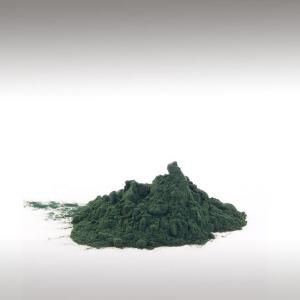

Arthrospira is a genus of free-floating filamentous cyanobacteria characterized by cylindrical, multicellular trichomes in an open left-hand helix. There is a dietary supplement made from Arthrospira Platensis and Arthrospira Maxima, known as Spirulina.
The Maxima and Platensis species were once classified in the genus Spirulina. There is now agreement that they are in fact Arthrospira; nevertheless, and somewhat confusingly, the older term Spirulina remains in use for historical reasons.
Arthrospira Platensis and Arthrospira Maxima occur naturally in tropical and subtropical lakes with high pH and high concentrations of carbonate and bicarbonate. Arthrospira Platensis occurs in Africa, Asia and South America, whereas Arthrospira Maxima is confined to Central America and Arthrospirapacifica is endemic to Hawaii Islands of America.
Arthrospira Platensis and Arthrospira Maxima occur naturally in tropical and subtropical lakes with high pH and high concentrations of carbonate and bicarbonate. Arthrospira Platensis occurs in Africa, Asia and South America, whereas Arthrospira Maxima is confined to Central America and Arthrospirapacifica is endemic to Hawaii Islands of America.
Most cultivated Spirulina
is produced in open channel raceway ponds, with paddle-wheels used to
agitate the water. The largest commercial producers of Spirulina are
located in the United States, Thailand, India, Taiwan, China, Pakistan, Burma, Greece and Chile.
Submitted by OperaDreamhouse (September 11, 2014)
Oil Bottles ☸ Tools ☸ Base / General
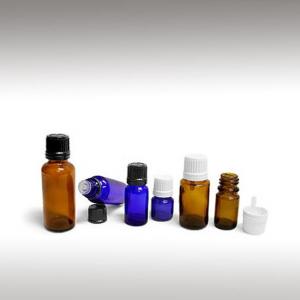

Glass dropper bottles are available in a great selection of sizes, shapes and colors, from the 1/3 oz green glass boston round to the 2 oz oval amber bottles.
The glass euro dropper bottles have many features that make them great bottles for essential oils and oils. The glass bottles come complete with orifice reducer for controlled essential oil dispensing. Dark color glass bottles such as blue and amber could possibly be helpful for light sensitive products.
Essential oil sample bottles are a convenient, simple way to share essential oil and oils samples with friends, family, and prospective customers and distributors.
The glass euro dropper bottles have many features that make them great bottles for essential oils and oils. The glass bottles come complete with orifice reducer for controlled essential oil dispensing. Dark color glass bottles such as blue and amber could possibly be helpful for light sensitive products.
Essential oil sample bottles are a convenient, simple way to share essential oil and oils samples with friends, family, and prospective customers and distributors.
Submitted by OperaDreamhouse (September 11, 2014)
Sea-Buckthorn Oil (Hippophae Rhamnoides) ☸ Base oils ☸ Base / General
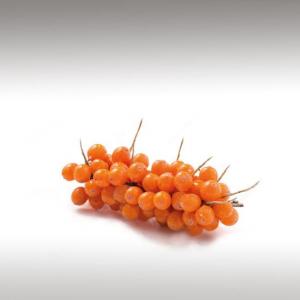

Hippophae Rhamnoides, common Sea-Buckthorn, is a species of flowering plant in the family Elaeagnaceae. Hippophae Rhamnoides
can grow 2 - 4 m high. The leaves are alternate, narrow and lanceolate,
with silvery-green upper faces.
It is dioecious, which means that the male and female flowers grow on different shrubs. The male inflorescence is built up of four to six flowers without petals. The female inflorescence consists normally of only one flower without petals and contains one ovary and one ovule. Male plants need to be planted near the female plants to allow fertilisation and fruit production. The oval or lightly roundish fruits grow in compact grapes varying from pale yellow to dark orange and weighing from 0,2 g to 1 g. Oil can be extracted from either the seeds or the pulp of the fruit.
Hippophae Rhamnoides is a native plant throughout Europe, including Britain, from Norway south and east to Spain and Asia to Japan and the Himalayas.
It is grown as an agricultural plant in Germany, France, Finland, India and China. China is the largest agricultural producer.
The origin of the plant is Nepal and it migrated to other parts of Eurasia after the last Ice Age. It is also cultivated as an ornamental plant in gardens and parks.
Chemical structure:
Oils from Sea-Buckthorn seeds and pulp differ considerably in fatty acid composition. While linoleic acidand α-linolenic acidare the major fatty acids in seed oil, Sea-Buckthorn pulp oil contains approximately 65% combined of the monounsaturated fatty acid, palmitoleic acid, and the saturated fattyacid, palmitic acid. Few other vegetable oils contain a similar quantity of these fatty acids. Both the seed and pulp oils are rich in tocopherols, tocotrienols and plant sterols. In addition, the pulp oil contains especially high levels of carotenoids.
It is dioecious, which means that the male and female flowers grow on different shrubs. The male inflorescence is built up of four to six flowers without petals. The female inflorescence consists normally of only one flower without petals and contains one ovary and one ovule. Male plants need to be planted near the female plants to allow fertilisation and fruit production. The oval or lightly roundish fruits grow in compact grapes varying from pale yellow to dark orange and weighing from 0,2 g to 1 g. Oil can be extracted from either the seeds or the pulp of the fruit.
Hippophae Rhamnoides is a native plant throughout Europe, including Britain, from Norway south and east to Spain and Asia to Japan and the Himalayas.
It is grown as an agricultural plant in Germany, France, Finland, India and China. China is the largest agricultural producer.
The origin of the plant is Nepal and it migrated to other parts of Eurasia after the last Ice Age. It is also cultivated as an ornamental plant in gardens and parks.
Chemical structure:
Oils from Sea-Buckthorn seeds and pulp differ considerably in fatty acid composition. While linoleic acidand α-linolenic acidare the major fatty acids in seed oil, Sea-Buckthorn pulp oil contains approximately 65% combined of the monounsaturated fatty acid, palmitoleic acid, and the saturated fattyacid, palmitic acid. Few other vegetable oils contain a similar quantity of these fatty acids. Both the seed and pulp oils are rich in tocopherols, tocotrienols and plant sterols. In addition, the pulp oil contains especially high levels of carotenoids.
Submitted by OperaDreamhouse (September 10, 2014)
African Bluegrass Essential Oil (Cymbopogon Validus) ☸ Essential oils ☸ Base / General
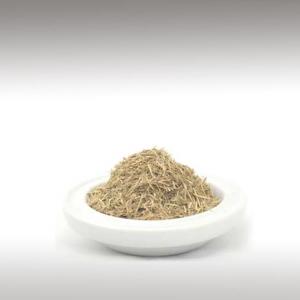

African Bluegrass is a fast growing and invasive aromatic
gray-green grass, with a unique lemon odor. It is sometimes known by its
more common names of giant turpentine grass, tambookie grass, or
tambuti. This wild grass is in the same family as Palmarosa, Gingergrass, Lemongrass and Citronella. It’s aroma is more complex and rich than any of the others in its family. Aromatically, it is in a world of its own.
Botanical Name: Cymbopogon validus
Common Method of Extraction: Steam distilled
Part Typically Used: Wild grass leaves, grass tufts
Color: Light to mid yellow in hue
Consistency: Thin
Perfumery Note: Middle
Strength of Initial Aroma: Lemony/grass smell with slightly herbaceous base notes. Medium to Strong.
Cymbopogon comes from the Greek ‘ kumb’ meaning nacelle (boat) and "pogon" meaning bores or beard. It is said that it appeared in the composition of holy oil (olive oil, grooves, myrrh and citronella).
Cymbopogon validus oil is a pure therapeutic quality aromatherapy essential oil, produced using wild-crafted plants and traditional methods, from South Africa, obtained from the grass.
Submitted by OperaDreamhouse (September 10, 2014)
Blackcurrant Bud Distillate (Ribes Nigrum) ☸ Herbal distillates ☸ Base / General
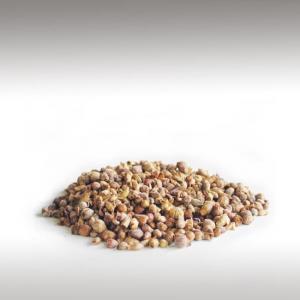

The Blackcurrant (Ribes nigrum) is a woody shrub in the family Grossulariaceae grown for its piquant berries. It is native to temperate parts of central and northern Europe and northern Asia where it prefers damp fertile soils and is widely cultivated both commercially and domestically.
The Back currantshrub is native to Europe and parts of Asia and is particularly popular in Eastern Europe and Russia. It is winter hardy but cold weather at flowering time during the spring reduces the size of the crop.
Bunches of small, glossy black fruit develop along the stems in the summer and can be harvested by hand or by machine. The fruit is rich in Vitamin C, various other nutrients, phytochemicals and antioxidants.
Ribes nigrum Buds essential oils obtained from three Blackcurrant varieties. Essential oils where distillation by steam distillation. In that time we get and blackcurrant distillate.
The Back currantshrub is native to Europe and parts of Asia and is particularly popular in Eastern Europe and Russia. It is winter hardy but cold weather at flowering time during the spring reduces the size of the crop.
Bunches of small, glossy black fruit develop along the stems in the summer and can be harvested by hand or by machine. The fruit is rich in Vitamin C, various other nutrients, phytochemicals and antioxidants.
Ribes nigrum Buds essential oils obtained from three Blackcurrant varieties. Essential oils where distillation by steam distillation. In that time we get and blackcurrant distillate.
Submitted by OperaDreamhouse (September 10, 2014)
Damask Rose Essential Oil (Rosa Damascena) ☸ Essential oils ☸ Medicine / Health
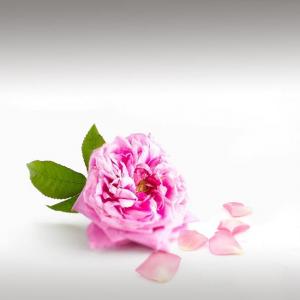
 Most of Rosa Dascena Essential Oil effects are hypnotic, analgesic,anticonvulsant effects. The respiratory, cardiovascular, laxative, antidiabetic, antimicrobial, anti-HIV, anti-inflammatory and antioxidant
Most of Rosa Dascena Essential Oil effects are hypnotic, analgesic,anticonvulsant effects. The respiratory, cardiovascular, laxative, antidiabetic, antimicrobial, anti-HIV, anti-inflammatory and antioxidant
Several pharmacological properties including anti-HIV, antibacterial, antioxidant, antitussive, hypnotic, antidiabetic and relexant effect on tracheal chains have been reported for this plant.
The most therapeutic effects of Rosa Damascena in ancient medicine are ancluding treatment of abdominal and chest pain, strengthening the heart, treatment of menstrual bleeding and digestive problems, and reduction of inflammation, especially of the neck. North American Indian tribes used a decoction of the root of Rosa Damascena plant as a cough remedly to ease childrens cough.
Rose Oil heals depression, grief, nervous stress and tension. It helps in the reduction of thirst, healing oil caugh, special complaints of women, wound healing, and skin health. Therapy of Rose oil is helpful for some allergies, headaches and migraine.
Several Pharmacological studies been performed on Rosa Damascena to evaluate their effects on the central nervous system. Some of these effects that evaluated are hypnotic, anticonvulsant, anti-depressant, anti-anxiety, analgesic effects and nerve growth.
One of the effects of Rosa damascea on central nervous system is its hypnotic effect.
The ethanol crude extract of Rosa Damascena and its fractions were also investigated in mice. It was shown that they can prolong the pentobarbital induced sleeping time comparable to diazepam. Flavonoids have been shown to have anxiolytic andantidepressant activity in numerous studies. It can be suggested that flavonoids of the Rosa Damascena contribute to the hypnotic effect.
The analgesic effext of Rosa Damascena is also reported. It has been reported that Rosa Damascena cintains flavonoid. Therefore, it seems that these compounds have some role in the analgesic effect of the plant. Therefore Rosa Damascena may have beneficial effect in patients suffering from dementia.
Other components of essential oil Rosa Damascena such as geraniol and eugenol have been shown to have antiepileptic effect.
The effects of the essential oil of Rosa damascena as an adjunct in treatment of chikdren with refractory seizures were also studied and showed a significant reduction in the mean frequency of seizures in patients using essential oil of the plant. Therefore, the essential oil of Rosa Damascena has beneficial antiepileptic effect in children with refractory seizures.
Ethanolic and aqueous extracts of this plantsignificantly reduce number of coughs induced by citric acid.
The effects of water and methanol extracts of Rosa Damascena on HIV infection were studied in vitro. Rose Damascena exhibited some anti-HIV activity.
It has been found that Rosa Damascena exert an anti-diabetic effect. anti-diabetic effect of this plant maybe mediated by inhibition of alfa-glucosidase that suppressed carbohydrte absorption from the small intestine and can reduce the postprandial glucose level.
Rosa Damascena Essential Oil has wide spectrum antimicrobial activities. Essential oil, absoliute and hydrosol are important products that showed these effects. Rose Essential oil has strong antibacterial activity against Escherichia coli, Pseudomonas aeruginosa, B. sutilis, Staph. aureus, Chromobacterium violaceun and Erwinia carotovora strains. The Chromobacteriuk violaceum was the most sensitive microorganism against Rose Essential Oil.
Antibacterial effect of rose oil maybe mediated by these components : citrenellol, geraniol and nerol.
Rosa Damascena has high antioxidant activities. Sources of natural antioxidants are primarily phenolics compuond that are found in all plant parts. Rosa Damascena contains, vitamin C which has antioxidant and anti-inflammatory effects.
This herb have been conventionally used in the Ayurvedic system of medicine since time immemorial and reportedly possess anti-infective and anti-inflammatory properties. this essential oil contains several components such as terpenes, glycosides, flavonoids and anthocyanins that have beneficial effects on human health.
Submitted by OperaDreamhouse (August 28, 2014)
Damask Rose Essential Oil (Rosa Damascena) ☸ Essential oils ☸ Food / Cooking

 Rose is the king of flowers and Damask Rose is classified in old garden Roses. The origion of Damask Rose is Iran and the Middle East region and it is the national flower of Iran.
Rose is the king of flowers and Damask Rose is classified in old garden Roses. The origion of Damask Rose is Iran and the Middle East region and it is the national flower of Iran.
Rosa Damascena known as Gole Mohammadi is Iran of the most important species of Rosaceae family flowers. Rosaceae are well knownornamental plants and have been referred to as the king of flowers. At present time, over 200 Rose species and more than 18000 cultivars form of the plant have been indentified. Apart from the use of Rosa Damascena as prnamental plants in parks, gardens, and houses, they are principally cultivated for using in perfume, medicine and food industry.
Because of the low oil content in Rosa Damascena and the lack of natural and synthetic substitutes, essential rose oil of this plant is one of the most expensive ones in the world markets.
Rose Damascena is a perennial bushy shrub reaching approximately 1 to 2 meters in height with large, showy and colorful flowers. The leaves are imparipinnate and compuond with 5 - 7 leaflets. Its life span is up to 50 and economic pwriod is about 25 years.
There are evidences that Rosaceae family is an ancient plant. Some fossils of rose are found in America that are 30 million years old. The origin of Damask Rose is the Middle East and some evidences indicate that the origin of rose wather is Iran, but the origin of its fragrant oil and extracts is Greece. This plant is cultivated in alll over the world including Iran, Europe, Bulgaria, Turkey and India.
There are many evideces that cultivation and consumption of Rosa Damascena in Iran has a long history and Iran is one of its origins. It is believed that the crude distillation of Roses for the oil was originated from Persia in the late 7th century AD, and spread to the provinces of Ottoman Empire later in 14th centuy. Iran was the main producer of Rose Oil until the 16th century and exported it to all around the world.
It is a volatile oil obtained by distillation of the fresh flowers of Rose Damascena. The chief producting countries are Bulgaria, Turkey and Morocco, but not a major product in Iran. The oil is prepared in copper alembic stills by the peasant or in large factories under careful scientific control. Some 3000 parts of flowers yields only one part of oil. The oil is very expensive and very liable to adulteration.
Because of the low oil content in Rosa Damascena and the lack of natural and synthetic substitutes, Essential Rose Oil is one of the most expensive ones in the world markets.
Chemical composition:
This plant contains carboxylic acid, myrcene, vitamin C, kaempferol and quarcetin. Flowers also contain a bitter principle, tanning matter, fatty oil and organic acids. In Rosa Damascena Oil founded more than 95 macro- and micri-components. Among them, eighteen compounds represented more than 95% of the total oil. The identified compounds were: beta-citronellol (14,5-47,5%), nonadecane (10,5-40,5%), geraniol (5.5-18%), and nerol and kaempferol were the major components of the oil.
Phenolics possess a wide range of pharmacological activities, such as antioxidants, free-radical scavengers, anticancer, anti-inflammatory, antimutagenic and antidepressant.
Submitted by OperaDreamhouse (August 28, 2014)
Cucumber Seed Oil (Cucumis Sativus) ☸ Base oils ☸ Food / Cooking
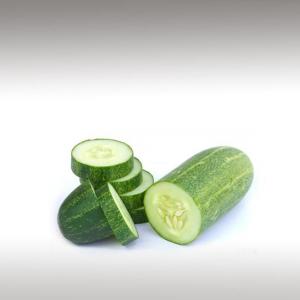

The oil itself is rich in Vitamins B1 and C, tocopherols, and phytopherols.
The Cucumber, or Cucumis Sativus, belongs to the Cucurbitaceae family of fruits, which also includes Melons, Squashes, and Gourds.
Cucumber Seed oil is perfect for making salad dressings (drizzling over salads) and mayonnaise or sprinkling on Cucumber salad.
The Cucumber, or Cucumis Sativus, belongs to the Cucurbitaceae family of fruits, which also includes Melons, Squashes, and Gourds.
Cucumber Seed oil is perfect for making salad dressings (drizzling over salads) and mayonnaise or sprinkling on Cucumber salad.
Submitted by OperaDreamhouse (August 18, 2014)
Cucumber Seed Oil (Cucumis Sativus) ☸ Base oils ☸ Medicine / Health


Cucumber Seed oil works as an anthelmintic, antibacterial, anti-inflammatory, antiseptic, demulcent, diuretic, febrifuge, purgative, vermifuge.
Cucumber oil is believed to be beneficial for treating some dry skin conditions, acne, boils, and for helping the skin to retain moisture.
The high tocopherol and tocotrienol content indicates that Cucumber Seed oil would be effective in defending skin cells from free-radical damage.
This oil boosts production of collagen, stimulates cell turnover, and increases skin's suppleness.
Cucumber Seed oil can also help with healing of many illnesses including lung, stomach, and chest problems.
Moistens the lungs for lung dryness for those who live in or are travelling in hot or dry climates.
This oil cools the blood and has a purifying effect on the intestines. It also kills tapeworms.
It is good in all cases where it is necessary to neutralize the excessive acidity, as in diabetes, gout, obesity, arthritis.
Cucumber Seed oil can also be used on the scalp. Many psoriasis and eczema sufferers will also experience outbreaks in the scalp area. A couple of drops of Cucumber oil can be massaged into the scalp to help keep symptoms under control.
Cucumber oil is believed to be beneficial for treating some dry skin conditions, acne, boils, and for helping the skin to retain moisture.
The high tocopherol and tocotrienol content indicates that Cucumber Seed oil would be effective in defending skin cells from free-radical damage.
This oil boosts production of collagen, stimulates cell turnover, and increases skin's suppleness.
Cucumber Seed oil can also help with healing of many illnesses including lung, stomach, and chest problems.
Moistens the lungs for lung dryness for those who live in or are travelling in hot or dry climates.
This oil cools the blood and has a purifying effect on the intestines. It also kills tapeworms.
It is good in all cases where it is necessary to neutralize the excessive acidity, as in diabetes, gout, obesity, arthritis.
Cucumber Seed oil can also be used on the scalp. Many psoriasis and eczema sufferers will also experience outbreaks in the scalp area. A couple of drops of Cucumber oil can be massaged into the scalp to help keep symptoms under control.
Submitted by OperaDreamhouse (August 18, 2014)
Cucumber Seed Oil (Cucumis Sativus) ☸ Base oils ☸ Beauty / Cosmetics


Suitable for sensitive, dry, combination, mature skin types.
Cucumber Seed oil can be effective in treating dry skin, eczema, psoriasis, acne and sunburned skin. It is a good choice for inclusion in formulations for revitalizing maturing skin. It is a good choice for inclusion in formulations for revitalizing maturing skin. It is excellent choice for use in moisturising formulations for the skin and hair care.
Cucumber Seed oil is very light with a fatty acid composition that helps to keep the skin fresh, soft and moisturized.
Cucumber Seed oil spreads easily and is absorbed relatively quickly by the skin. The oil is absorbed quickly by the skin and it spreads well without leaving a sticky skin feeling.
Studies indicate that phytosterols help the skin strengthen its lipid barrier. Restoring proper moisture balance, smoothing the skin's surface and improving skin elasticity. Phytosterols are also known for their ability to nourish and stimulate the skin cells to encourage regeneration of healthy skin cells.
The Vitamin B1 and C content of Cucumber oil is believed to help detoxify the skin's pores and, consequently, helps to eliminate some related conditions, such as acne or boils.
The tocopherols and phytopherols in this oil are believed to help restore the skin's moisture levels and help maintain proper balance. Cucumber Seed oil improving skin elasticity.
It could go into any skin care products for sensitive skin or around the eyes.
Another benefit of Cucumber Seed oil includes the properties of building elasticity of naturally curly hair, keeping it strong and preventing annoying breakage caused by weak, chemical and/or heat damaged hair.
The natural silica in the Cucumber Seed encourages new hair growth and helps to reduce the chances of hair loss.
Chlorinated water can inflict severe damage to the hair and applying Cucumber Seed oil will act like a shield by leaving a protective barrier on each hair strand so that the chemicals from pool water won't be absorbed by the hair. In addition, those who have brittle nails will also benefit from using this oil.
Cucumber Seed oil can lead to the accelerated healing of blemishes, pimples, and boils.
Cucumber Seed oil can be effective in treating dry skin, eczema, psoriasis, acne and sunburned skin. It is a good choice for inclusion in formulations for revitalizing maturing skin. It is a good choice for inclusion in formulations for revitalizing maturing skin. It is excellent choice for use in moisturising formulations for the skin and hair care.
Cucumber Seed oil is very light with a fatty acid composition that helps to keep the skin fresh, soft and moisturized.
Cucumber Seed oil spreads easily and is absorbed relatively quickly by the skin. The oil is absorbed quickly by the skin and it spreads well without leaving a sticky skin feeling.
Studies indicate that phytosterols help the skin strengthen its lipid barrier. Restoring proper moisture balance, smoothing the skin's surface and improving skin elasticity. Phytosterols are also known for their ability to nourish and stimulate the skin cells to encourage regeneration of healthy skin cells.
The Vitamin B1 and C content of Cucumber oil is believed to help detoxify the skin's pores and, consequently, helps to eliminate some related conditions, such as acne or boils.
The tocopherols and phytopherols in this oil are believed to help restore the skin's moisture levels and help maintain proper balance. Cucumber Seed oil improving skin elasticity.
It could go into any skin care products for sensitive skin or around the eyes.
Another benefit of Cucumber Seed oil includes the properties of building elasticity of naturally curly hair, keeping it strong and preventing annoying breakage caused by weak, chemical and/or heat damaged hair.
The natural silica in the Cucumber Seed encourages new hair growth and helps to reduce the chances of hair loss.
Chlorinated water can inflict severe damage to the hair and applying Cucumber Seed oil will act like a shield by leaving a protective barrier on each hair strand so that the chemicals from pool water won't be absorbed by the hair. In addition, those who have brittle nails will also benefit from using this oil.
Cucumber Seed oil can lead to the accelerated healing of blemishes, pimples, and boils.
Submitted by OperaDreamhouse (August 18, 2014)
Page 33 of 48

